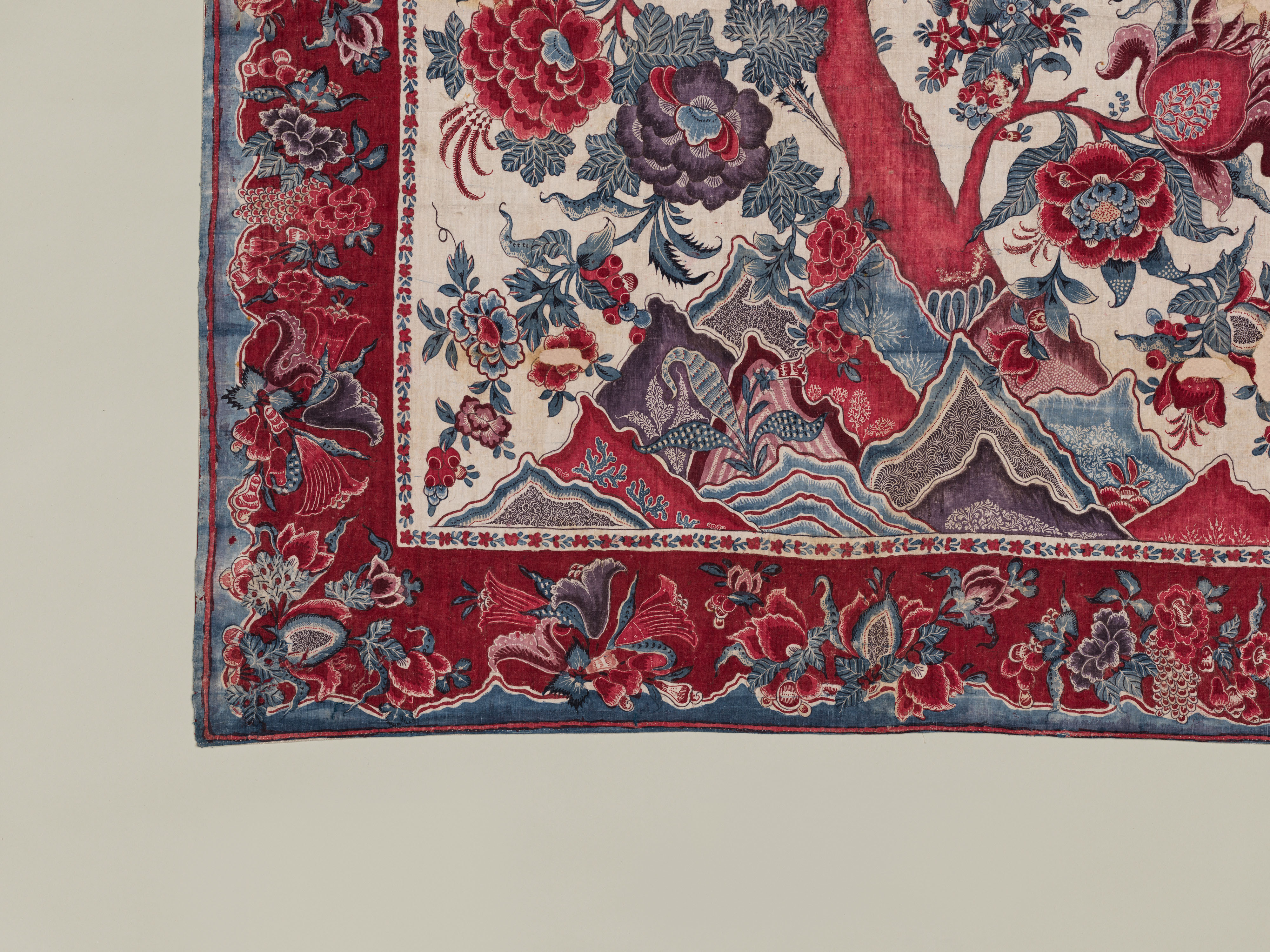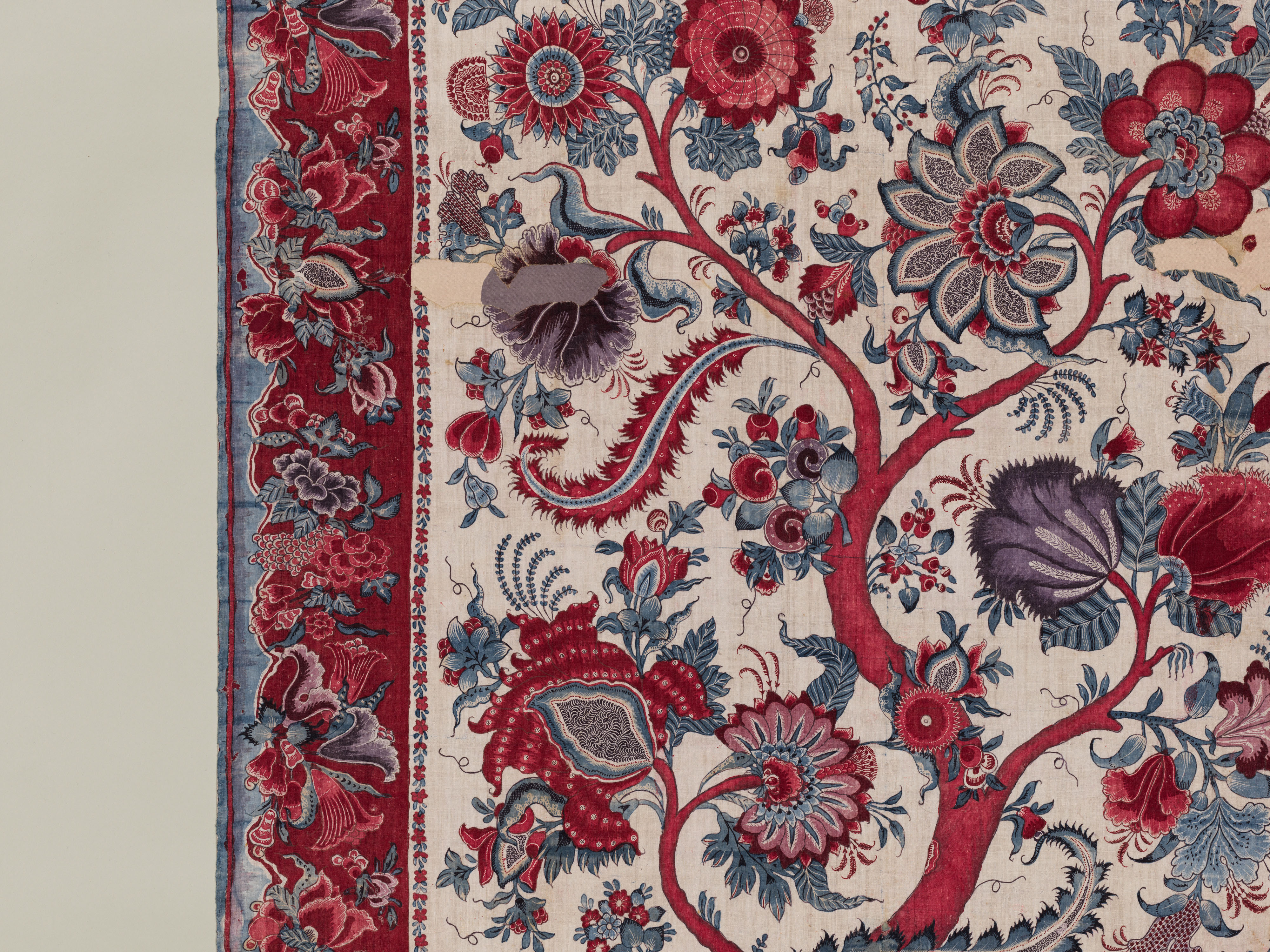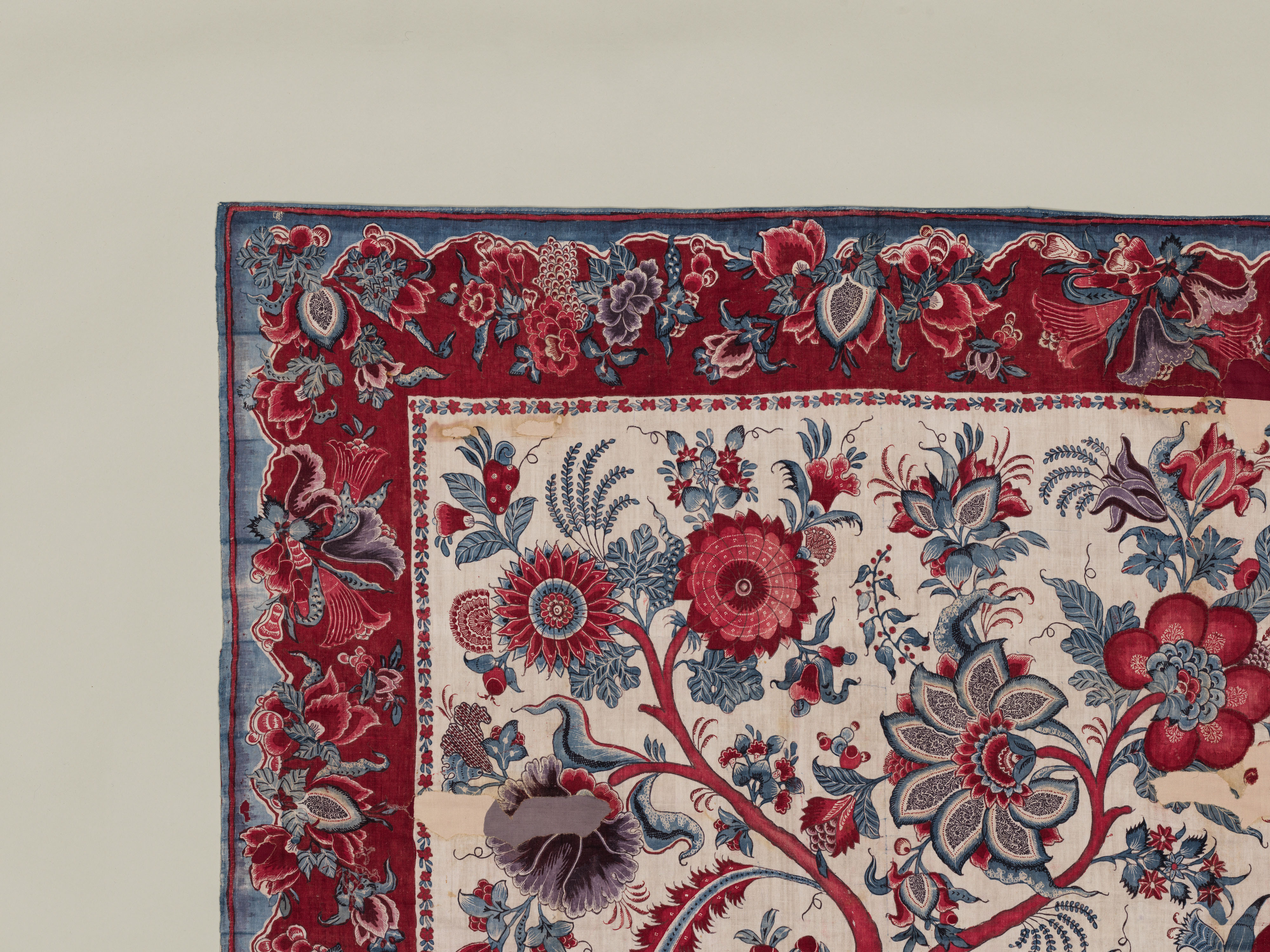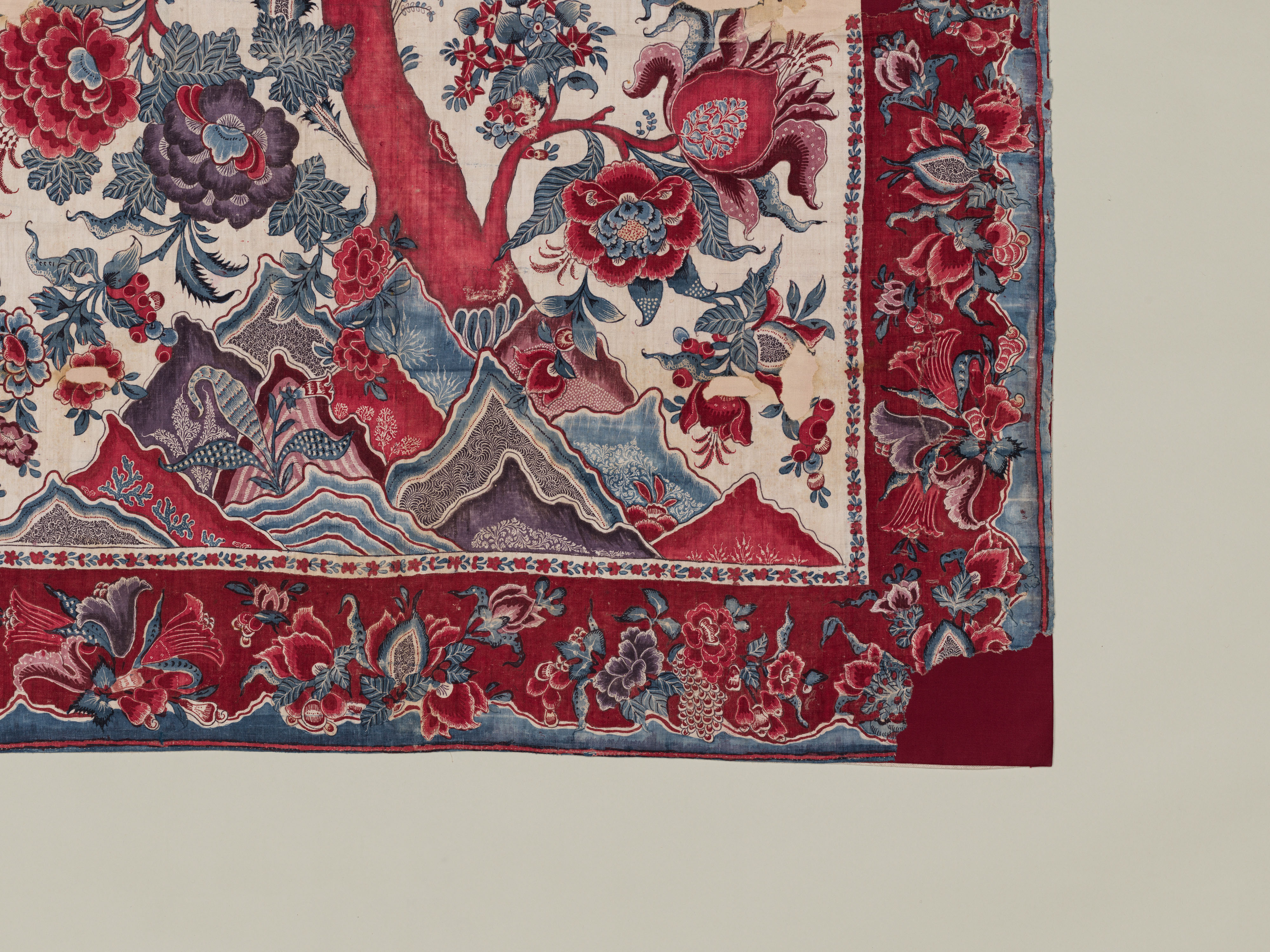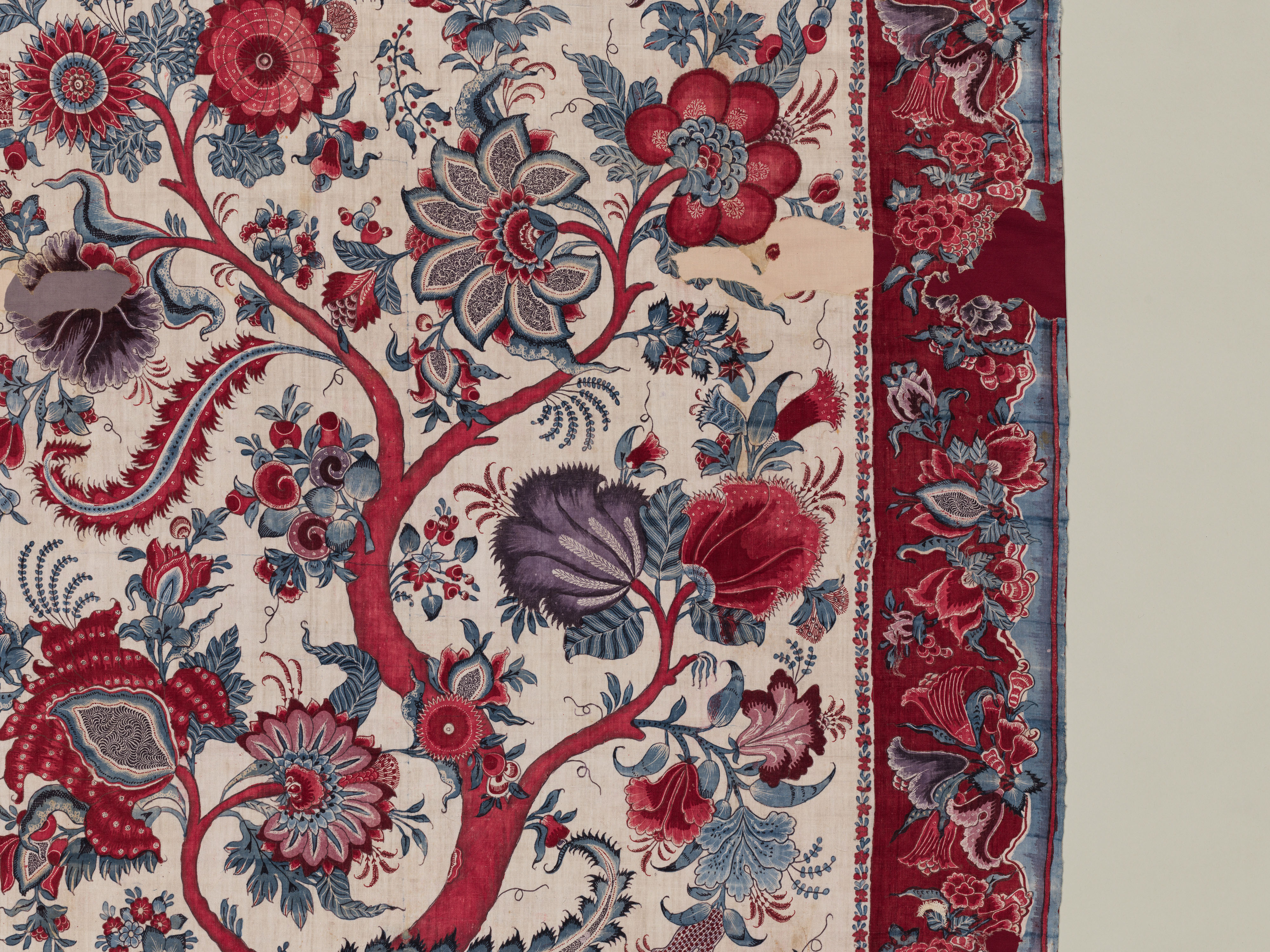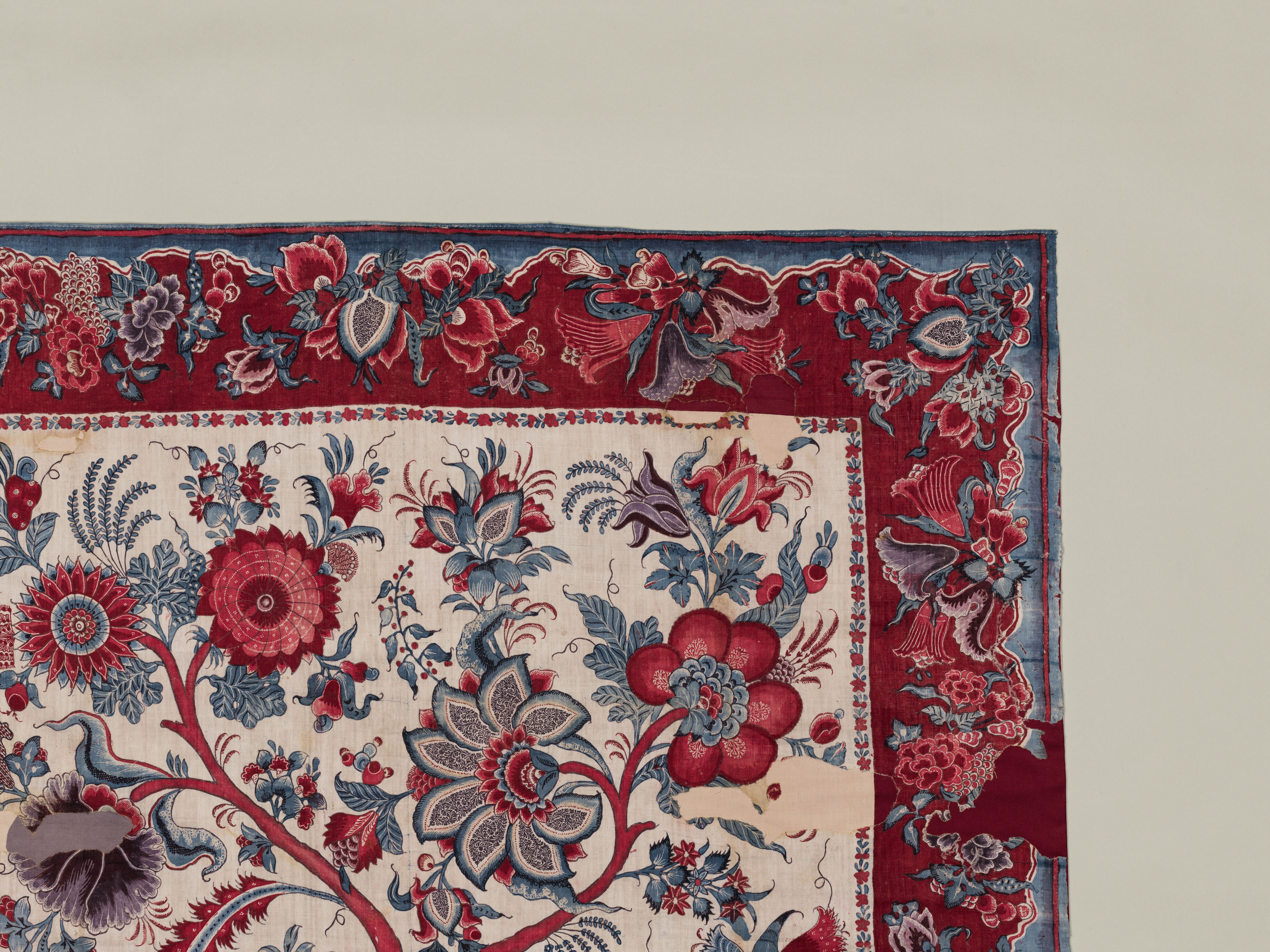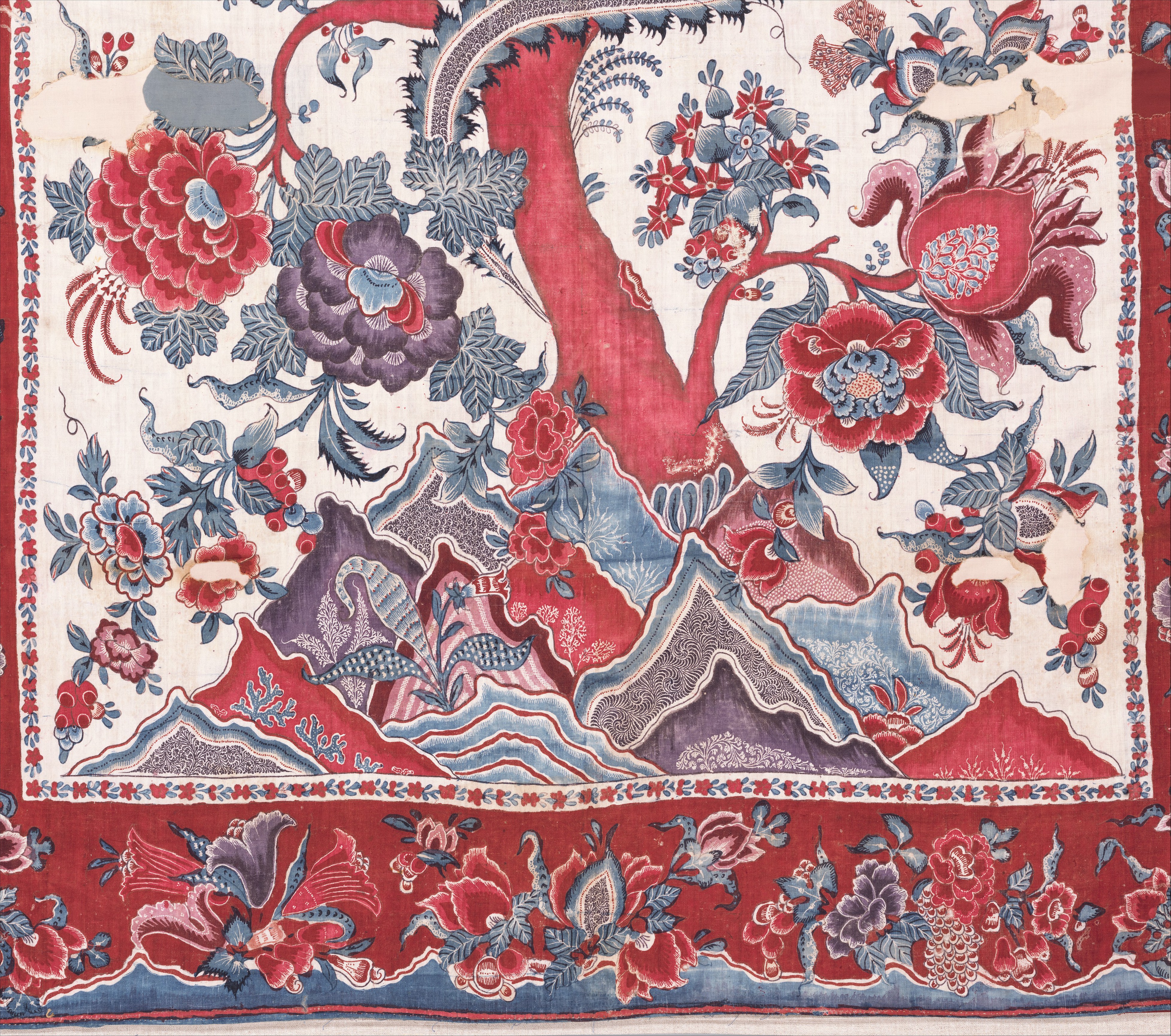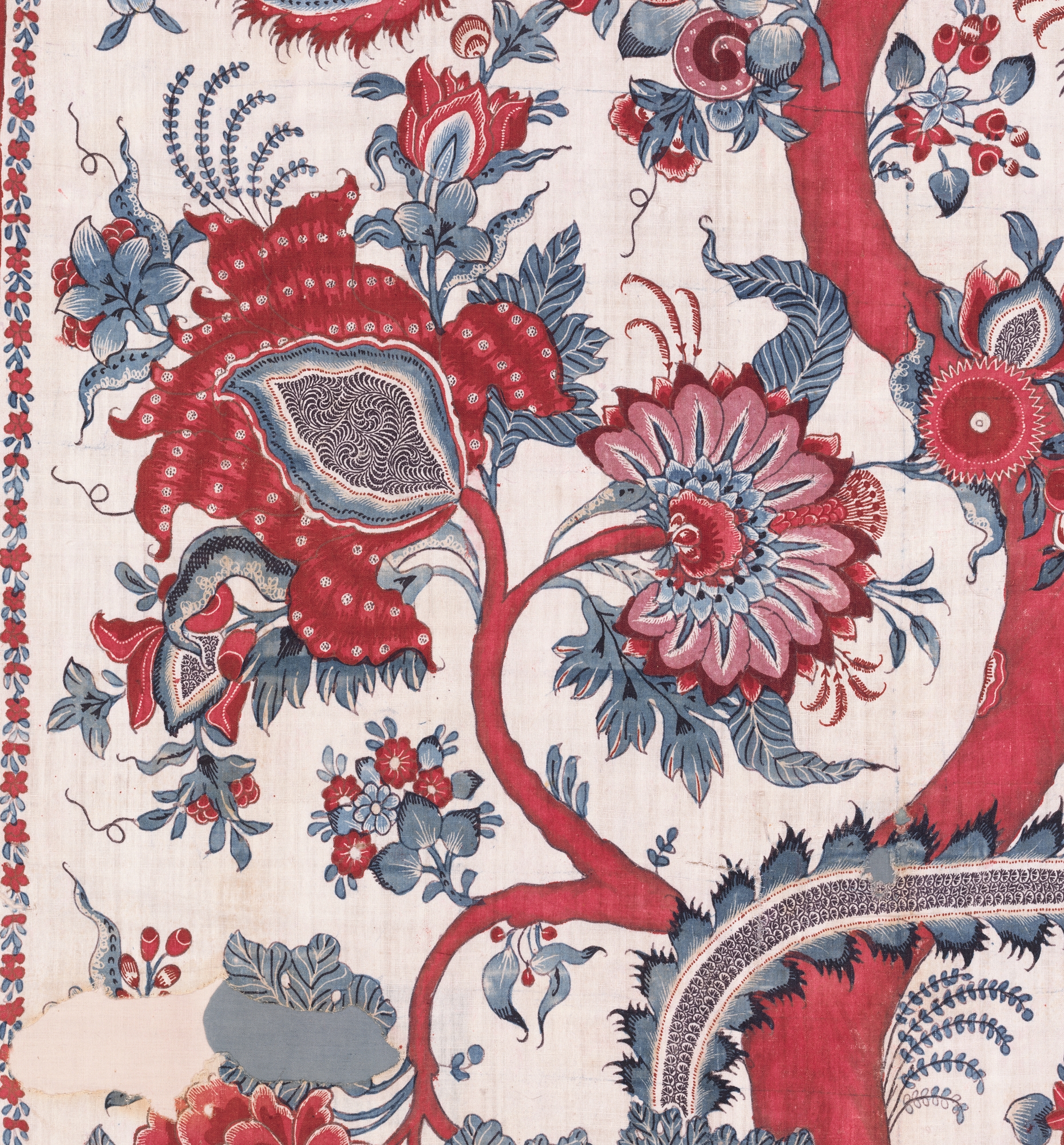Palampore
India (Coromandel Coast), for the Sri Lankan market
Not on view
Palampores were a regular feature of the eighteenth-century chintz trade to Europe, where they were prized as wall hangings and bed and table coverings. They typically show a central flower-and-fruit-bearing serpentine tree emerging from a hillock with stylized peaks or rocks. In addition to those produced for the Dutch and English markets, a class of smaller palampores was made expressly for the intra-Asian trade. This robustly painted version was originally sourced to Sri Lanka, likely made for the European communities in Batavia and Colombo or for families of mixed European and Asian descent wishing to emulate Western taste.
cat. no. 37
Due to rights restrictions, this image cannot be enlarged, viewed at full screen, or downloaded.
This artwork is meant to be viewed from right to left. Scroll left to view more.


